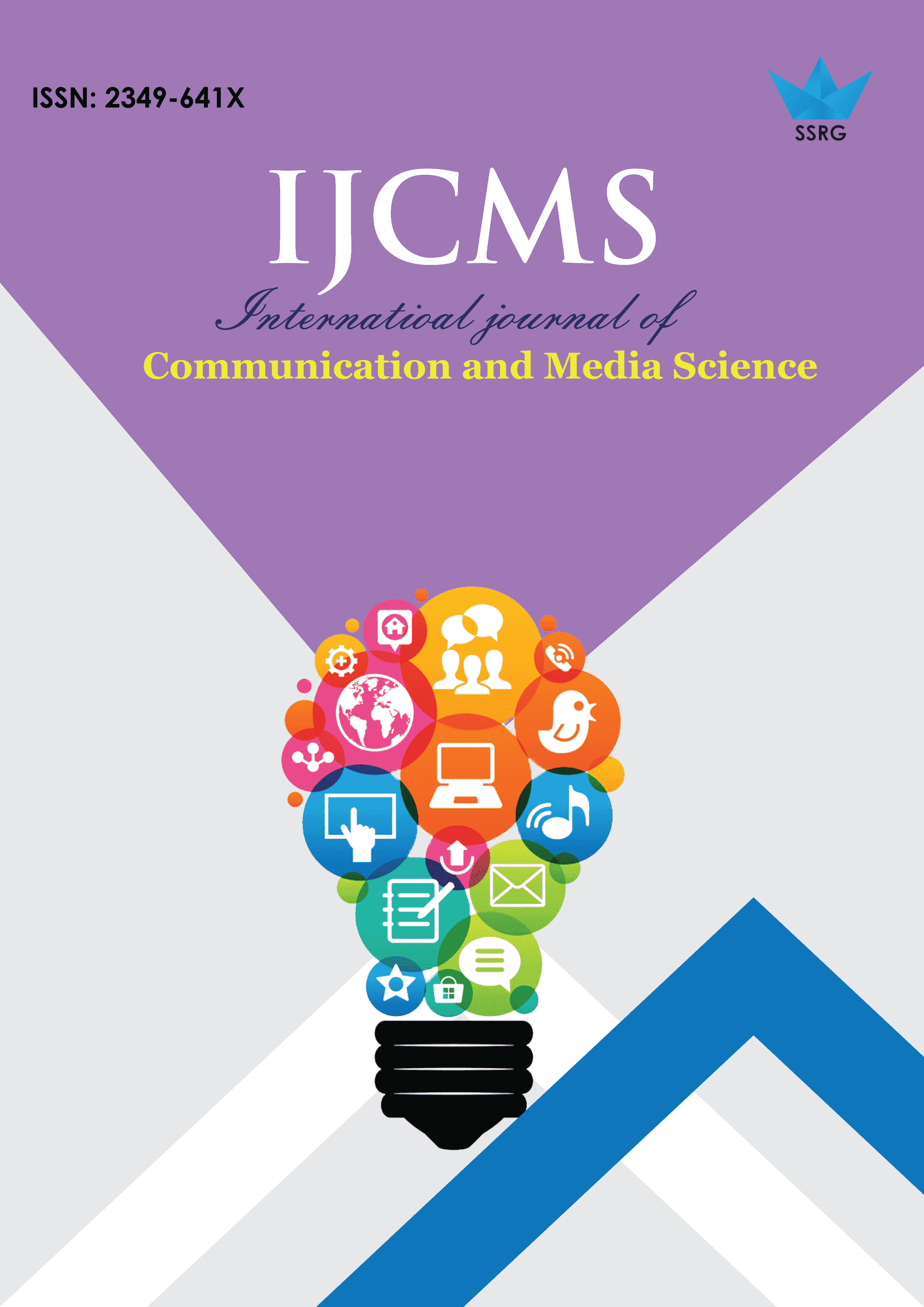The Mus-E Program: An Inclusive Experience that Improves Educational Success

| International Journal of Communication and Media Science |
| © 2024 by SSRG - IJCMS Journal |
| Volume 11 Issue 2 |
| Year of Publication : 2024 |
| Authors : Montserrat Rincón Asensio |
How to Cite?
Montserrat Rincón Asensio, "The Mus-E Program: An Inclusive Experience that Improves Educational Success," SSRG International Journal of Communication and Media Science, vol. 11, no. 2, pp. 28-33, 2024. Crossref, https://doi.org/10.14445/2349641X/IJCMS-V11I2P103
Abstract:
In an attempt to approach inclusive methodologies that allow improving academic results in basic instrumental areas, preferably mathematics and language, in students from disadvantaged educational contexts, the idea of working in this article on a unique program arises, the Mus-E Program. Under the Comparative Education methodology, 20 Educational Centers that share similar characteristics in terms of school students, family, educational context, and sociocultural environment are submitted for analysis. It is intended to establish to what extent the Mus-E Program has an impact on the educational success of students and on the reduction of school absenteeism.
Keywords:
Quality of education, Intercultural education. School success, School failure, Socio-educational disadvantage.
References:
[1] Gerardo Echeita, Education for Inclusion or Education without Exclusions, Narcea Ediciones, pp. 1-184, 2016.
[Google Scholar] [Publisher Link]
[2] Isabel Pimenta Freire and Sheyla Maria Fontenele Macedo, “Qualitative research in Education – Epistemological and Ethical Aspects,” Revista Pesquisa Qualitativa, vol. 10, no. 24, pp. 276-296, 2022.
[CrossRef] [Google Scholar] [Publisher Link]
[3] Gerardo Echeita Sarrionandía and Marta Sandoval Mena, “Inclusive Education or Education without Exclusions,” Revista de Educación, no.327, pp. 31-48, 2002.
[Google Scholar] [Publisher Link]
[4] Purificació Biniés Lanceta, “Educational Inclusion, a Right,” Aula de Innovación Educativa, no. 205, pp. 60-64, 2011.
[Google Scholar] [Publisher Link]
[5] Mel Ainscow, “Routes for the Development of Inclusive Practices in Educational Systems,” Revista de Educación, no. 327, pp. 69-82, 2002.
[Google Scholar] [Publisher Link]
[6] María Antonia Casanova, and Humberto J. Rodríguez, Educational Inclusion, a Horizon of Possibilities, La Muralla Publishing House, pp. 1-280, 2009.
[Google Scholar] [Publisher Link]
[7] Ángeles Parrilla Latas, “About the Origin and Meaning of Inclusive Education,” Revista de Educación, no. 327, pp. 11-29, 2002.
[Google Scholar] [Publisher Link]
[8] Xavier Besalú, Cultural Diversity and Education, Síntesis, pp. 1-254, 2002.
[Google Scholar] [Publisher Link]
[9] Maria Jose Chisvert Tarazona, Alicia Ros Garrido, and Vicent Horcas Lopez, Regarding Educational Inclusion: A Broader View of School, 2013.
[Google Scholar] [Publisher Link]
[10] Alvaro Marchesi, and Carlos Hernandez Gil, School Failure an International Perspective, Editorial Alliance, pp. 1-334, 2003.
[Google Scholar] [Publisher Link]
[11] Peter John Coronado Albalate, and Arturo Morales, “Educational Understanding as an Inclusion Strategy in Access to Education,” Revista de Sociología de la Educación-RASE, vol. 5, no. 2, 169-185, 2012.
[Google Scholar] [Publisher Link]
[12] Pilar Arnaiz Sánchez, Inclusive Education: A School for All, Aljibe, pp. 1-279, 2003.
[Google Scholar] [Publisher Link]
[13] Pilar Arnaiz Sánchez, “Fighting Exclusion: Good Practices and School Success,” Innovación Educativa, no. 21, 23-35, 2011.
[Google Scholar] [Publisher Link]
[14] Anabel Moriña Díez, “The Path to Inclusion in Spain: A Review of Special Education Statistics,” Revista de Educación, no. 327, 395- 414, 2002.
[Google Scholar] [Publisher Link]
[15] Tony Booth, Mel Ainscow, and Mark Vaughan, Index for Inclusion Developing Learning and Participation in Schools, CSIE, pp. 1-110, 2000.
[Google Scholar] [Publisher Link]
[16] Raúl González Fernández, María del Castañar Medina Domínguez, and María C. Domínguez Garrido, “Advantages of the Inclusive Treatment of Diversity: Perspectives of the Main Agents in Charge of its Development,” Enseñanza & Teaching: Revista Interuniversitaria de Didáctica, vol. 34, no. 2, 131-148.
[CrossRef] [Google Scholar] [Publisher Link]
[17] Ramon Porras Vallejo, “Barreras a la Inclusión Educative” J. Ipland y Otros. La Atención a la Diversidad. Diferentes Miradas, pp. 77-101, 2008.
[Google Scholar]
[18] Álvaro Marchesi Ullastres, School Failure and Educational Change, Educación, Igualdad y Diversidad Cultural, pp. 87-101, 2005.
[Google Scholar] [Publisher Link]
[19] Manuel de Puelles Benítez, Education, Equality and Cultural Diversity, Biblioteca Nueva, pp. 1-273, 2005.
[Publisher Link]
[20] Eva María Pérez García, and Álvaro Marchesi Ullastres, School Failure an International Perspective, Alianza Editorial, pp. 1-334, 2003.
[Google Scholar] [Publisher Link]
[21] Josep M. Puig Rovira, Education in Values and School Failure, El Fracaso Escolar, Una Perspectiva Internacional, pp.82-97, 2003.
[Google Scholar] [Publisher Link]
[22] José Antonio García Fernández, “Organization in the Intercultural School,” Fuente: Red de Escuelas Interculturales [en línea].
[Google Scholar] [Publisher Link]
[23] Anabel Domínguez Contreras, “The MUS-E Program, Inclusion through Art,” Eufonía: Didáctica de la Música, no. 42, pp.17-31, 2008.
[Google Scholar] [Publisher Link]
[24] Cony Villarroel Raimillaa, and José Luís Muñoz Moreno, “Didactic and Organizational Strategies: Addressing Diversity in Schools of Culture and Artistic Dissemination,” Estudios pedagógicos (Valdivia), vol. 47, no. 3, pp. 321-342, 2011.
[CrossRef] [Google Scholar] [Publisher Link]
[25] Louis Cohen, Lawrence Manion and Keith Morrison, Research Methods in Education, 7 th ed., Routledge, pp. 1-758, 2011.
[Google Scholar] [Publisher Link]

 10.14445/2349641X/IJCMS-V11I2P103
10.14445/2349641X/IJCMS-V11I2P103